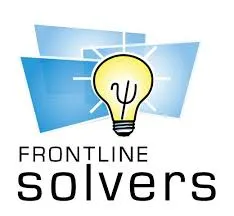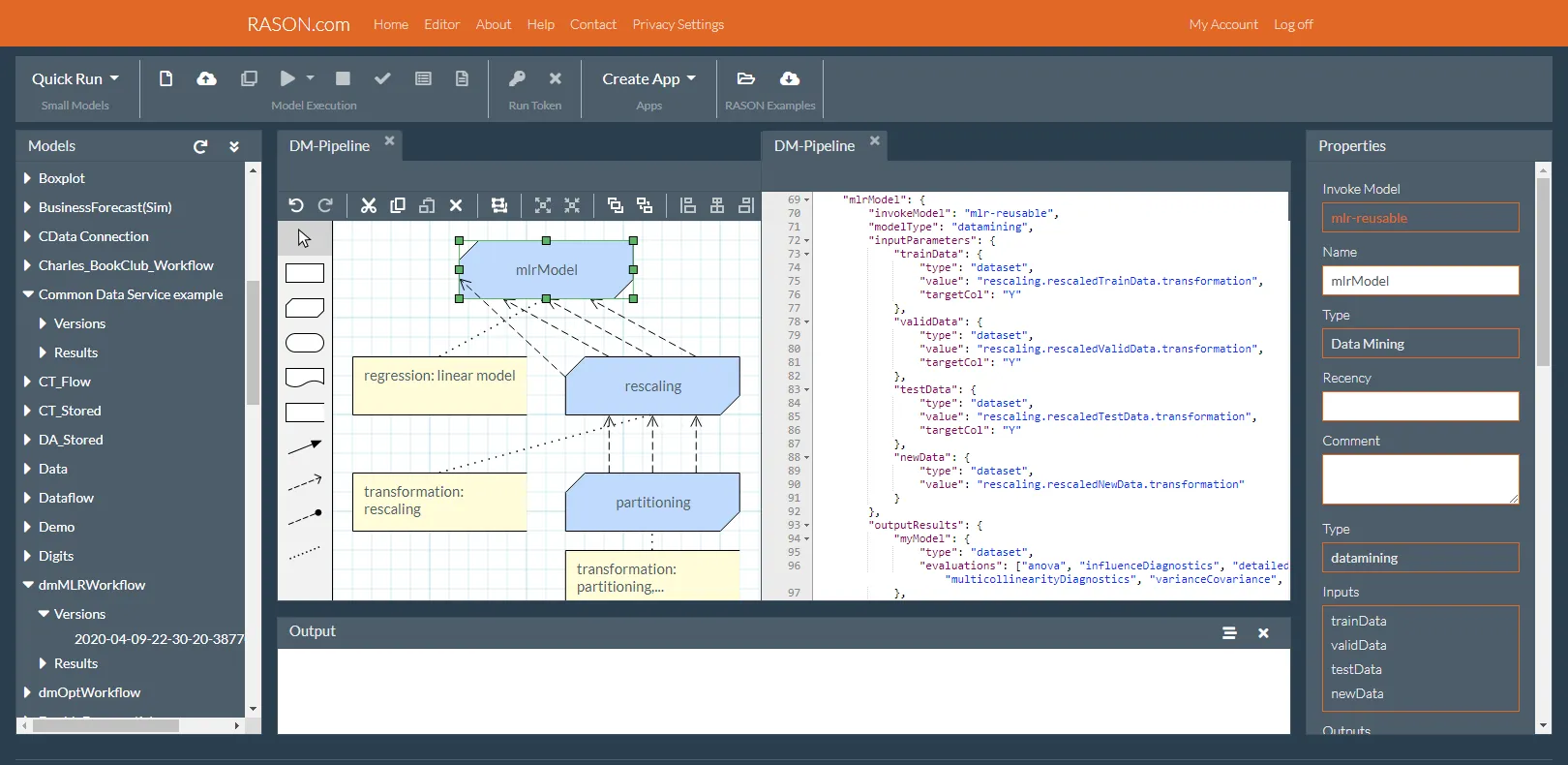
RASON is a high-level modeling language for creating and solving analytic models. It supports model creation, deployment, and management, and integrates with Microsoft Power Platform. Models can be run as RESTful services, returning results in JSON or OData.
Vendor
Frontline Systems
Company Website

RASON: Decision Analytics for the Microsoft Cloud
Capabilities
- Model Creation, Deployment, Management
- Business Rules, ML, Optimization, Simulation
- RESTful Decision Services use JSON, OData
- Easily Incorporate Excel Analytic Models
- Deep Support for Microsoft Power Platform
- Create, Manage Multi-Stage Decision Flows
Create Models in RASON or Excel
Create models in our high-level RASON modeling language, or use models created in Excel with Analytic Solver. Easily track model versions and multiple runs. Combine RASON and Excel models in a multi-stage decision flow.
Run Models as RESTful Services
Your model is an Azure-based cloud service with a REST API. Get results in JSON or OData. Use CDS or 100+ other cloud data sources. Easily use models in Power BI dashboards, Power Apps, and Power Automate process flows.
About the RASON® Language and REST API
RASON is a high-level modeling language you can use to quickly and easily create and solve analytic models. You can use RASON tools on Windows desktops and servers, but the RASON service is especially useful if you are building web or mobile applications, and you’re familiar with RESTful web services. RASON stands for Restful Analytic Solver® Object Notation. It offers many benefits compared to using a traditional modeling language, using Excel to create analytic models, or writing analytic models in a programming language.
Models in Analytic Solver® for Excel and in RASON®
RASON contains the entire Excel formula language as a subset, and supports nearly all Excel built-in functions. With either RASON or Analytic Solver for Excel, you can create and solve just about any predictive or prescriptive analytics model, using simulation, conventional or stochastic optimization, sensitivity analysis and more. Here's a simple example of an Airline Crew Schedule optimization problem, solved via linear mixed-integer programming, created in Excel, and automatically translated to RASON.
Train and Apply Models Using Text Mining, Forecasting and Machine Learning
RASON enables you to easily build and run multi-stage "data science workflows", that can clean and partition data, training a machine learning model, and use it to score new cases. And that's just the beginning: You can easily build multi-stage "decision flows" that use machine learning, optimization, business rules and decision tables.
Rich Data Connections -- and Analytic Model Results as Queryable Data
RASON makes it easy to use cloud data sources "in-place". For example, you can send an Excel workbook or CSV file from your computer to the RASON Server with your model, but it's easier to just save that file to OneDrive or OneDrive for Business, maintain it there (with multiple versions if you like), and use it directly in your RASON model. Besides OneDrive, the Common Data Service, and OData endpoints, RASON has built-in support for CData Corporation's Cloud Hub, which acts as a gateway to more than 100 different cloud data sources.
Easily Deploy Models and Decision Services in Power BI, Power Apps and Power Automate
Both Analytic Solver for Excel and RASON can automatically create a "custom visual" for Power BI. You can easily insert this custom visual on a Power BI report or dashboard, then drag and drop to connect datasets from Power BI to supply the data your model needs. As soon as you do -- and thereafter, whenever the Power BI data changes -- your model is automatically re-run, and the custom visual displays the new results. With Microsoft Power Apps, an analyst who isn't a developer can easily create an application that runs a RASON decision model -- like this one that solves a Portfolio Optimization problem -- "point and click" without writing any code. It's equally easy to automate steps of a business process, using Power Automate and calling a RASON decision model -- again "point and click" without writing any code. But a web developer can always step in and enhance this application, working in JavaScript, and using RASON's REST API.